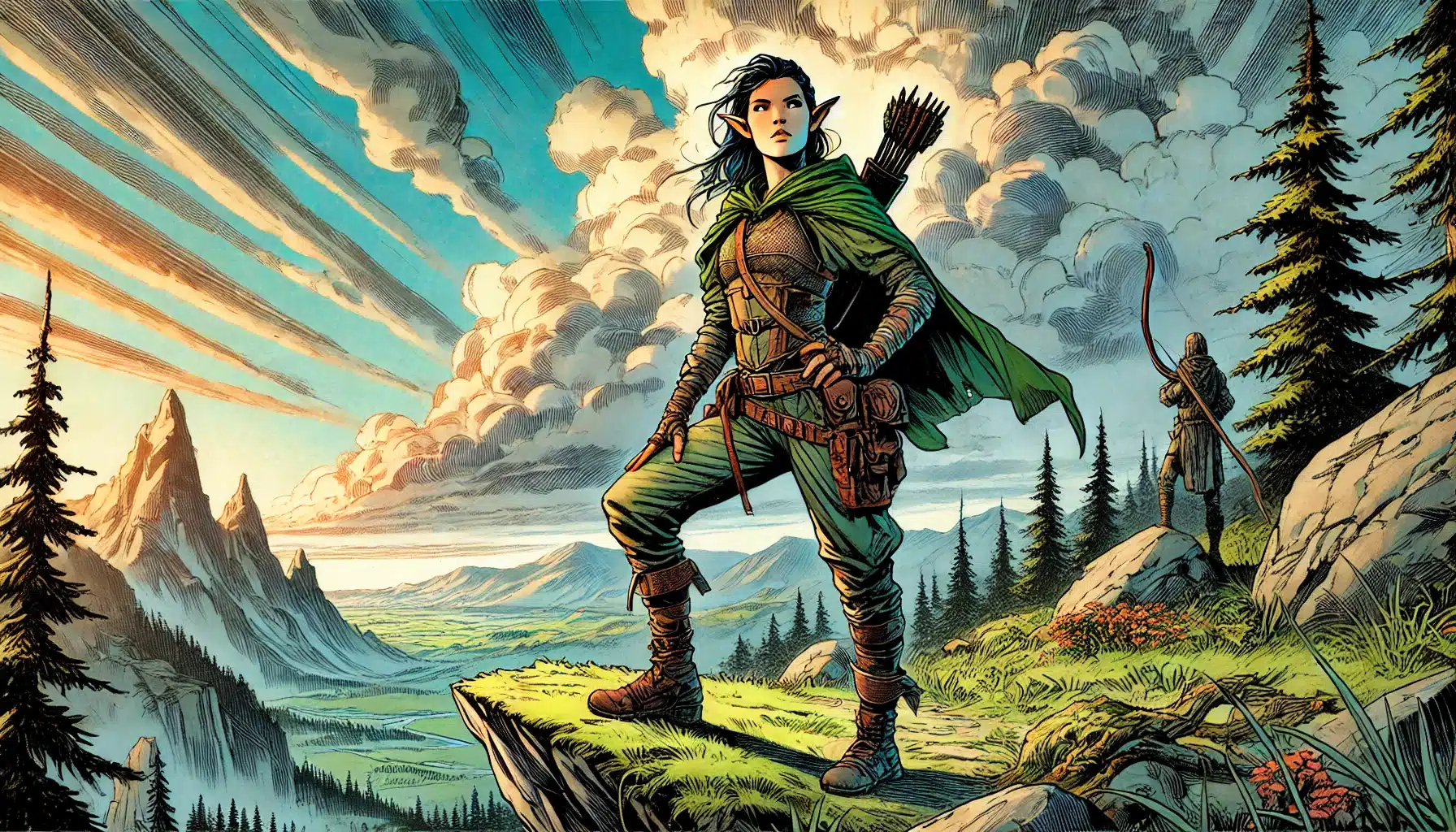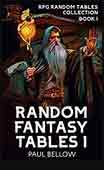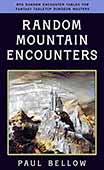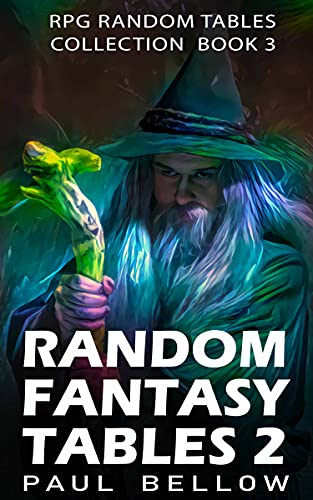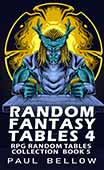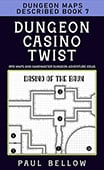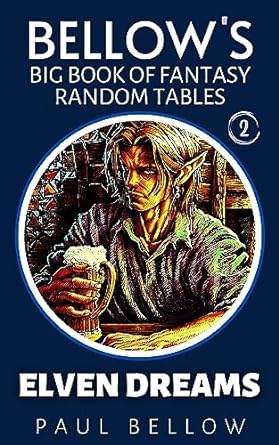Few choices in Dungeons & Dragons matter more—or carry more weight—than your character’s class. This decision doesn’t simply determine how you roll for damage or which spells you fling in combat; it fundamentally shapes how your hero acts, feels, and grows, both in and out of battle. Every class—from the primal Barbarian to the cerebral Wizard—embodies a distinct approach to challenge, aspiration, and the kind of story you want to explore at the table.
D&D 5e offers thirteen core classes: Barbarian, Bard, Cleric, Druid, Fighter, Monk, Paladin, Ranger, Rogue, Sorcerer, Warlock, Wizard, and the tinker-obsessed Artificer. Each brings its own mechanical engine and narrative archetype, creating a diverse ecosystem where every player finds their fit. With the 2024 rule updates, all classes have seen thoughtful rebalancing, promoting even progression and making the subclass experience punchier and more consistent across the board.
The role of the subclass cannot be overstated. Selected at level 3 for most classes (and level 1 for Clerics), subclasses push each character beyond the basics—transforming a Bard into a beguiler or a battlemaster, a Ranger into a relentless hunter of darkness, or a Warlock into the pawn (or master) of unknown patrons. They dictate not just powers, but personality, flavor, and even the way your character relates to the world.
Subclasses aren’t just mechanical footnotes. They sculpt your tactical arsenal, hint at unique backstories, and color every spell or strike with storytelling potential. The 2024 update standardizes subclass progress (levels 3, 6, 10, 14), ensuring all heroes unlock powerful signature features at the same milestones—a boon for both balance and pacing.
This guide catalogues each official subclass in 5e, up to and including the newest 2024 releases. You’ll find every archetype officially published by Wizards of the Coast profiled here—each with a spotlight on its unique mechanics and the role it plays both in the party and the narrative. Whether you want a sword-saint or a shadowy mastermind, a fey-blooded trickster or a tempestuous elemental, you’ll find the tools you need.
Beyond official options, D&D’s bottomless well of creative energy includes homebrew class choices—fan and designer-crafted offerings that capture archetypes beyond the published canon. This guide includes a curated selection of renowned homebrew classes, with notes on what makes them tick and tips for balancing custom options with DM approval.
Try my AI Tabletop RPG generators...and an extensive library of content!
Finally, multiclassing—a venerable tradition for those seeking to blend strengths, bridge archetypes, or just break the mold—earns dedicated mechanical and thematic attention. With progression costs but immense payoff (in the right hands), multiclassing remains the playground for players who crave deep customization.
Whether you’re a new player staring down your very first character sheet or a seasoned veteran searching for a fresh build, this guide is your roadmap to every official class and subclass in Dungeons & Dragons.
Understanding the Core Classes
The thirteen core classes of D&D 5e form a palette as colorful as any party’s roster. Mechanically, they sort into spellcasters, martial classes, and potent hybrids, each fulfilling a vital purpose across the game’s three pillars: exploration, combat, and social intrigue. Spellcasters like the Wizard, Cleric, or Druid channel ancient power through ritual, will, or faith, reshaping the battlefield but often relying on careful planning and tactical spell selection. Martial classes—think Fighter, Barbarian, Monk, Rogue—ensure that when magic fails, steel and muscle still speak.
Hybrids such as the Paladin, Ranger, Bard, Warlock, Sorcerer, and Artificer straddle those worlds. They can spike or soften the party’s needs, wielding magic and blades, invention and guile, each one suited to campaigns with shifting priorities or players who crave flexibility. This diversity guarantees a vibrant table, where everyone roles a different gear in the adventuring machine.
⚔️ Fantasy RPG Random Tables Books
Make life as a Gamemaster easier…
If you play Dungeons & Dragons, Pathfinder, or other fantasy RPGs, this
RPG random tables series
is packed with encounters, NPCs, treasure, and more. Available in eBook or print—either way, you’ll have a wealth of adventure ideas at your fingertips.
One of the flagship changes of the 2024 update is the universal pacing for subclass features. No longer do some classes wait longer than others to feel their unique identity bloom—instead, everyone receives important subclass upgrades at levels 3, 6, 10, and 14. This change doesn’t just improve balance; it fosters a steady sense of narrative and mechanical progress, allowing every player to experience iconic, class-defining moments at the same time.
Subclasses don’t just layer on new abilities. They fundamentally reshape how a class plays, offering creative paths to mastery. A Fighter’s subclass determines whether their extra attacks become disciplined maneuvers, magical flourishes, or supernatural might. A Rogue’s path distinguishes charming swashbuckler from eerie phantom. In every case, picking a subclass is a declaration: this is what YOUR story looks like at the table.
At its heart, class selection is a meeting of tactics and fantasy. Analyze the mechanics—sure. But listen to the voice of your character too. Do you want to debate politics and secrets, or batter down doors and face every foe head on? Do you solve problems with fireballs or sleight of hand? Let the class invite you to inhabit that fantasy.
Ultimately, D&D’s class system is a playground for every style of player, from the tactician to the dreamer. The real magic is in blending mechanics with personality, creating a hero whose strengths and flaws are equally unforgettable.
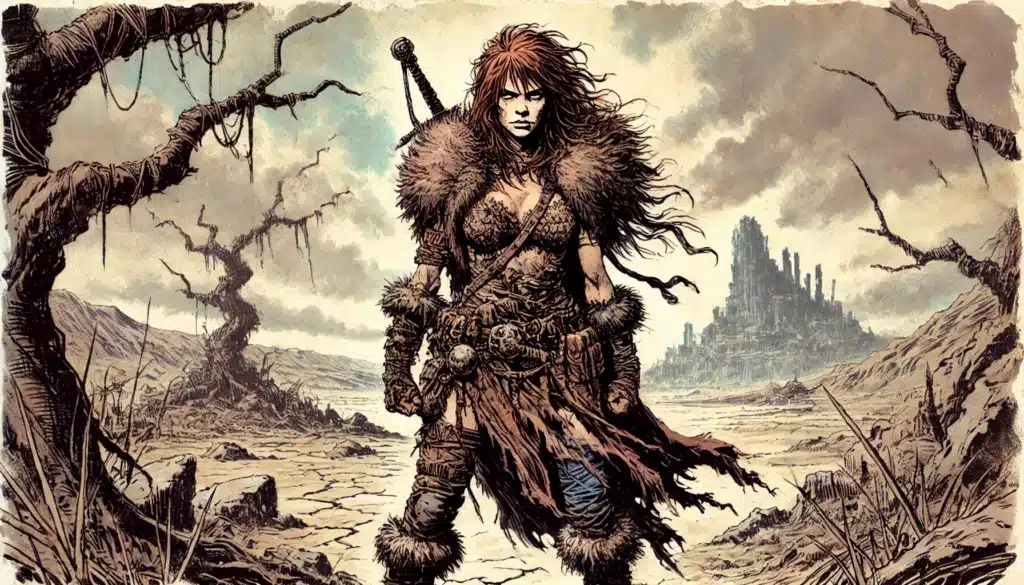
Barbarian
A thundering wall of muscle and fury, the Barbarian is D&D’s premier front-line bruiser. Built to absorb punishment and strike back twice as hard, Barbarians thrive in the heat of melee, with high hit points and some of the best damage output in the game. Their signature, Rage, transforms them into living stormclouds—bolstering defenses, amplifying every swing, and muting pain that would stagger other warriors.
Key features make their playstyle both brutally simple and explosively satisfying. Reckless Attack allows them to trade defense for deadly accuracy, ensuring their blows connect when it counts. Danger Sense gives them an almost supernatural awareness of threats and traps, further weaponizing their primal instincts. Brutal Critical makes every high-level Barbarian a nightmare for monsters, adding extra dice to their already fearsome critical hits.
Subclasses for Barbarians—chosen at level 3—span a huge spectrum of archetypes, each transforming your rage into something new and wild.
Official Subclasses:
- Berserker
- Totem Warrior
- Ancestral Guardian
- Storm Herald
- Zealot
- Beast
- Wild Magic
- Giant
Barbarians are perfect for players who want as little friction as possible between intention and action—no worrying about spell slots, juggling resources, or fragile mechanics. You point, you rage, and you break things.
Yet Barbarians aren’t all empty violence. The breadth of subclass options—from elemental warriors to spiritual protectors—supports rich storytelling and character nuance. Choose the path that makes your hero’s anger meaningful, whether it’s vengeance, ancestral duty, or strange, primal mutation.
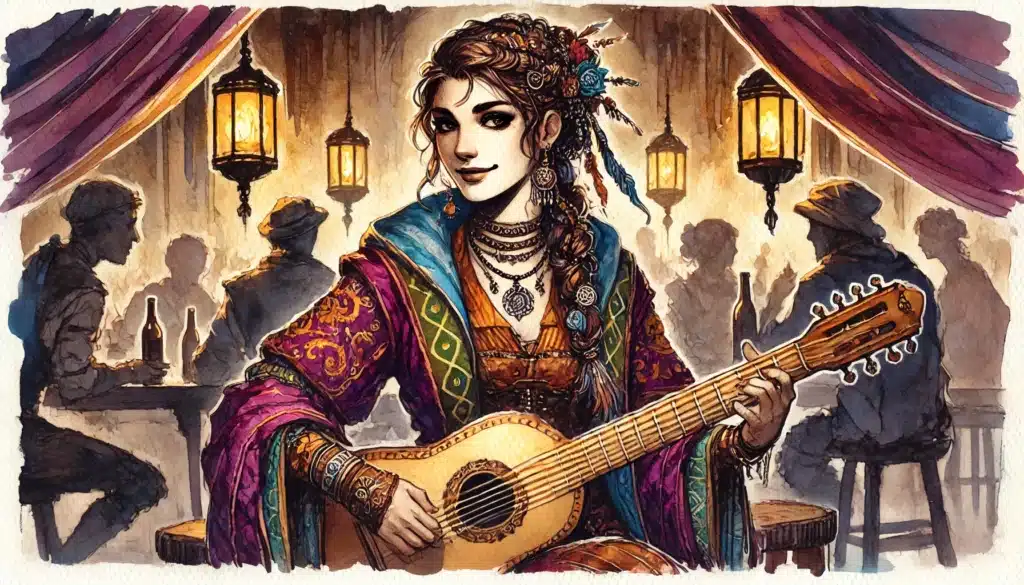
Bard
Bards are the ultimate chameleons—magic-wielding musicians, clever schemers, and champions of wit. A full spellcasting class with a reputation for social dominance, Bards bend the rules through sheer panache. Their defining ability, Bardic Inspiration, lets them elevate their allies’ rolls at the clutch moments. Jack of All Trades ensures that no skill check is beyond their reach, while Magical Secrets lets them borrow spells from any class in the game.
Adaptability isn’t just a perk—it’s the Bard’s way of life. Whether you’re enchanting a crowd, defusing a tense negotiation, or blasting enemies with sound and fury, the Bard can always find a way to shine. Their spells reward creativity, often blurring the line between support, control, and flashy offense.
Subclasses—called Colleges—unlock at level 3, channeling your flair into a specific specialty, from duelist to mastermind to tale-spinning medium.
Bard Colleges:
- Lore
- Valor
- Glamour
- Swords
- Whispers
- Eloquence
- Creation
- Spirits
Bards are a dream for players who enjoy equal parts magic, performance, and roleplaying. Each College leans you in a new direction: Lore tilts toward omniscience, Swords and Valor push you to the front line, while Whispers, Eloquence, and Glamour let you dominate any social arena.
Choose Bard if you crave a character with options—one who can adapt, influence, and sometimes steal the show, no matter the arena.
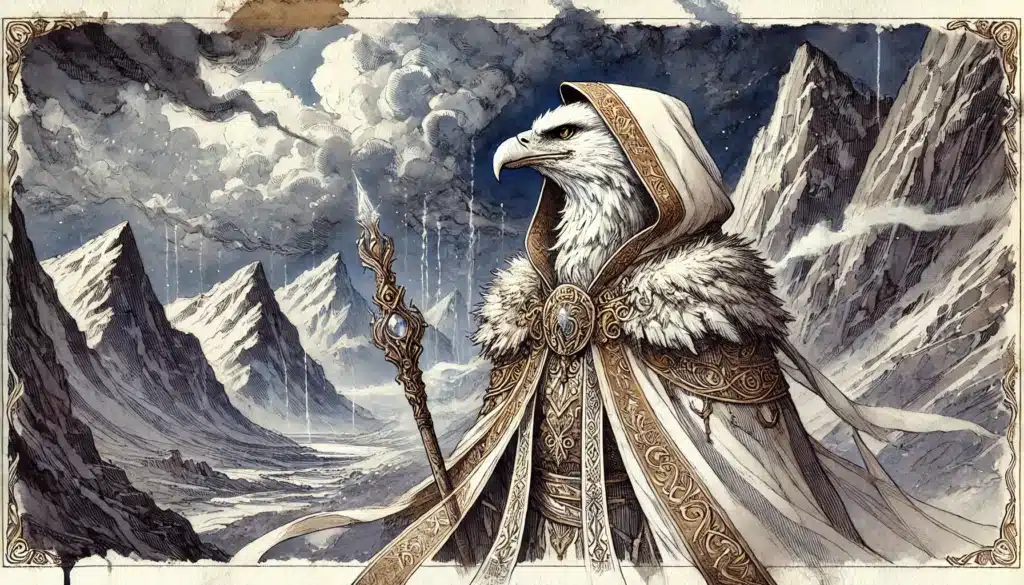
Cleric
The Cleric channels divinity directly, calling upon gods or cosmic forces to aid in battle, heal wounds, or smite foes. They are not frail mystics—almost every Cleric wears armor, wields weapons, and can stand alongside the hardiest warriors. Their spellcasting draws from a vast list of supporting, controlling, and damage-dealing prayers, often prepared new each day.
⚔️ Fantasy RPG Random Tables Books
Make life as a Gamemaster easier…
If you play Dungeons & Dragons, Pathfinder, or other fantasy RPGs, this
RPG random tables series
is packed with encounters, NPCs, treasure, and more. Available in eBook or print—either way, you’ll have a wealth of adventure ideas at your fingertips.
What sets Clerics apart is the divine Domain—chosen at level 1. This subclass dictates not only your philosophy and roleplay, but fundamental features, bonus proficiencies, and supplemental magic.
Cleric Domains:
- Life
- Light
- War
- Tempest
- Knowledge
- Nature
- Trickery
- Grave
- Forge
- Order
- Peace
- Twilight
Clerics can fill almost any party gap. Lifegivers, battlefield wreckers, wise sages, tricksters, or ethical anchors—there’s a Domain for every style or campaign. Domains expand spell access, add powerful channel abilities, and nudge your Cleric’s identity in truly radical directions.
As a Cleric, you’re the most flexible of full casters—one foot in the sanctuary, the other firmly on the front line. An ideal pick for players eager to mesh tactical utility with rich roleplaying, tied closely to the world’s cosmology and faith.
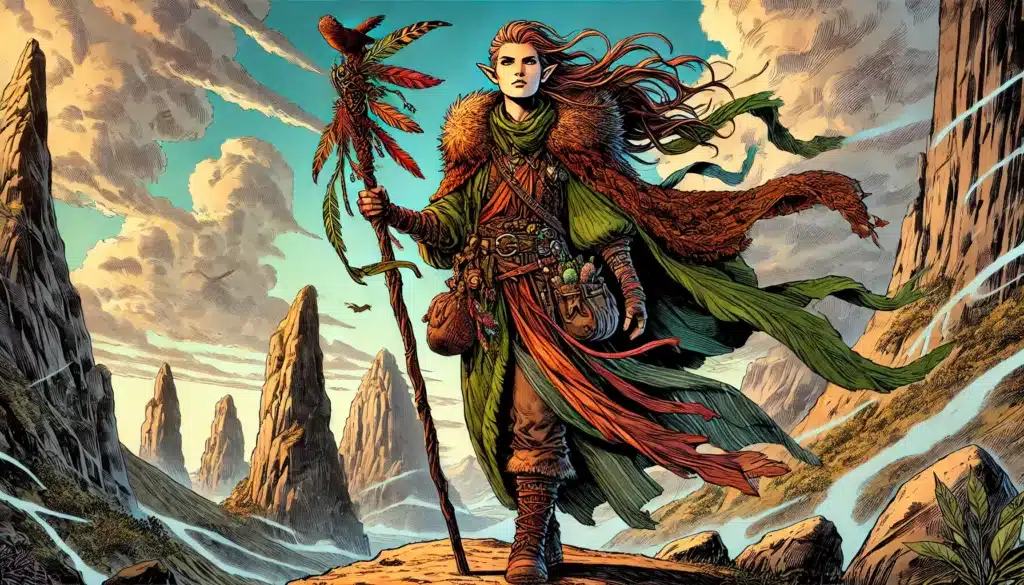
Druid
Druids bring nature’s fury and wisdom to the adventuring party, walking the wild edge between healing magic and feral transformation. Their most iconic feature is Wild Shape, allowing them to morph into beasts for scouting, battle, or escape, shifting the tactical landscape with every turn.
Druids command a spell list focused on environmental control, summoning, healing, and elemental destruction. They are at their best exerting influence over terrain—difficult ground, weather, and plant life all bend to their will.
Druidic subclasses—Circles—are chosen at level 3 (save for the Land, which is at level 2 in older rules).
Druid Circles:
- Land
- Moon
- Dreams
- Shepherd
- Spores
- Stars
- Wildfire
- Sea (2024)
Every Circle refocuses your Druid on a powerful theme: Moon turns you into a beast-warrior, Land multiplies your spell options, Shepherd and Stars pump up your support magic, Spores dives into fungal horror, and the new Sea Circle surges with aquatic adaptability.
Druids are a brilliant fit for players excited by shifting possibilities—magic, beast forms, and nature itself as ally. No two Druids will ever play or feel the same, and the storytelling options run as deep as any forest.
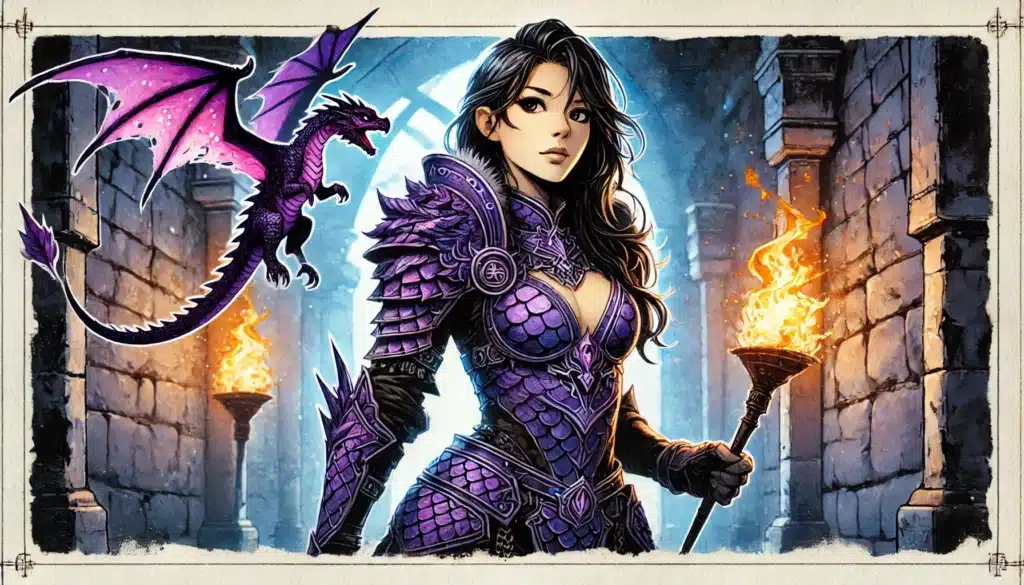
Fighter
Fighters are the backbone of any battlefield—weapon masters whose adaptability and reliability underpin countless party strategies. Boasting the highest number of attacks per round in 5e, Fighters excel at damage output, defense, and flexibility. Key class features—Action Surge, Second Wind, and Extra Attack—are both simple to apply and satisfyingly potent.
Fighters are the ultimate toolkit characters. Every weapon, every style of defense—if it’s martial, the Fighter does it best. With access to the largest pool of feats, and easy multiclassing capability, they are a min-maxer’s delight and a new player’s safe harbor.
Subclasses let Fighters specialize in exotic or magical directions.
Fighter Archetypes:
- Champion
- Battle Master
- Eldritch Knight
- Arcane Archer
- Samurai
- Cavalier
- Psi Warrior
- Rune Knight
- Echo Knight
- Weapon Master (2024)
Whether you want to be a tactical genius (Battle Master), arcane dervish (Eldritch Knight), or a dark-stepping duelist (Echo Knight), the subclass gives your Fighter a powerful and unique playstyle.
Fighters suit those who love high-impact, direct action—but who crave endless specialization and optimization options. Their subclasses unlock every possible fighting fantasy and then some.
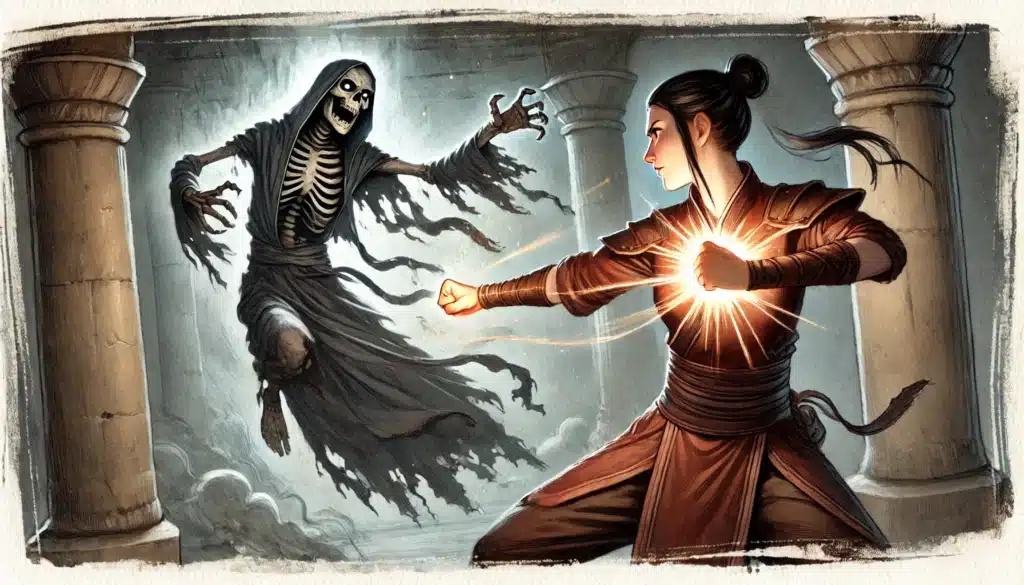
Monk
The Monk is a paragon of physical prowess, discipline, and supernatural speed. Monks combine martial artistry with spiritual energy, channeling Ki to pull off acrobatic stunts and unleash rapid-fire attacks. Their high Dexterity and Wisdom defenses, combined with unarmored agility, let them flit across any battlefield nearly untouched.
Monks are masters of mobility. Unarmored Movement and Deflect Missiles keep them moving, while abilities like Flurry of Blows and Stunning Strike lock down foes with a flurry of rapid punches.
Each Monastic Tradition, chosen at level 3, deeply influences both flavor and function.
Monastic Traditions:
- Open Hand
- Shadow
- Four Elements
- Sun Soul
- Kensei
- Mercy
- Astral Self
- Cobalt Soul (unofficial but popular)
Open Hand contests for the classic martial arts master, while Shadow delves into stealth, and Four Elements unleashes elemental powers. Sun Soul fires radiant blasts, Mercy brings healing, Astral Self summons ghostly forms, and Cobalt Soul brings investigative and anti-magic prowess.
Monks are for players who want clever tactics, movement, and control—high flavor, lower durability. They’re the class for those who want to dance circles around any enemy, choosing how and when to strike.
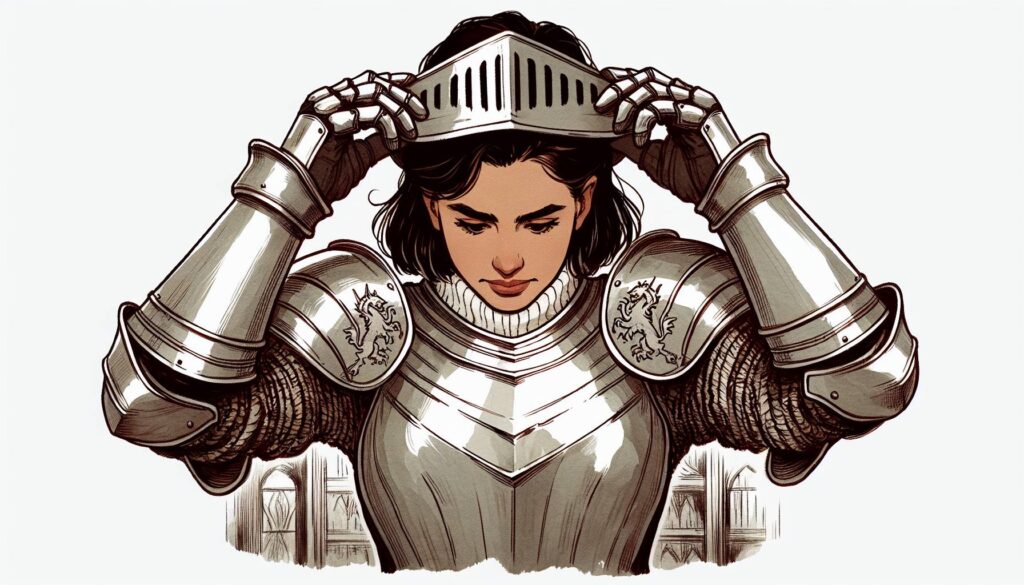
Paladin
Paladins are armored champions, driven by sacred Oaths that grant them divine favor and a formidable presence in any fight. Their signature ability, Divine Smite, transforms weapon hits into thunderous bursts of radiant magic, making them deadly to fiends, undead, and anyone else caught in their righteous path.
Try my AI Tabletop RPG generators...and an extensive library of content!
The Paladin’s auras protect allies, while Lay on Hands supplies healing. Their spells offer both utility and power, and they’re equally at home bolstering friends or leading the charge.
At level 3, choosing an Oath forges a Paladin’s destiny, flavor, and special features.
Sacred Oaths:
- Devotion
- Vengeance
- Ancients
- Oathbreaker
- Redemption
- Conquest
- Glory
- Watchers
- Crown
Oaths define a Paladin’s narrative: Devotion for classic virtue, Ancients for primal guardianship, Vengeance for dark avenging heroes, and so on. Pick Redemption for pacifist campaigns or Oathbreaker for fallen, mysterious antiheroes.
Paladins are for anyone who wants to blend tanking, team support, and explosive burst damage—always with a moral theme and larger-than-life story hooks.
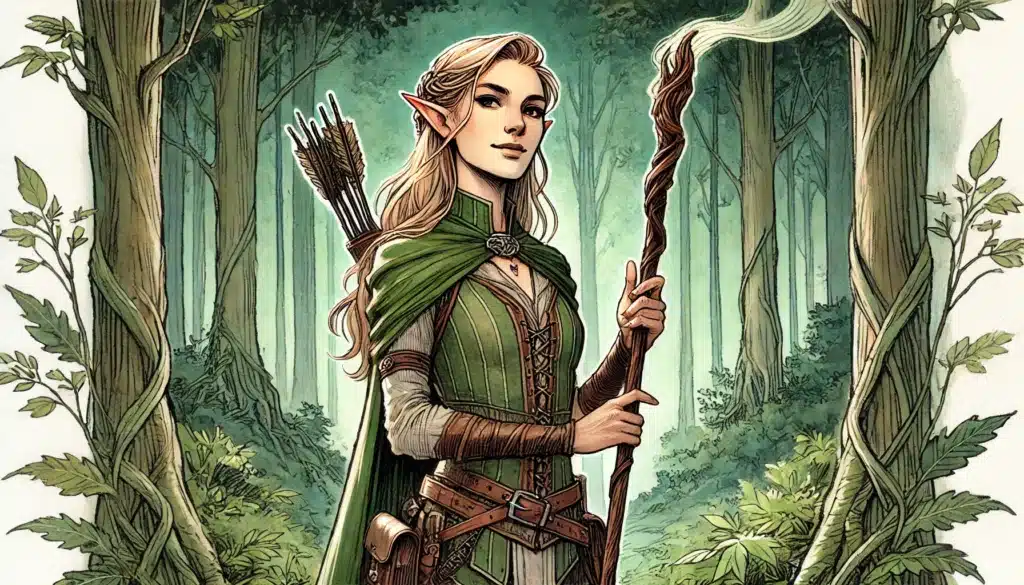
Ranger
Rangers are survivalists, scouts, and monster hunters, blending martial prowess with natural magic and uncanny intuition. Favored Enemy and Fighting Style offer an early sense of expertise; spellcasting, which ramps up gradually, means Rangers are never tied to the front line.
The classic Ranger dilemma—hunter or beast master?—has been resolved with serious upgrades in 2024. Now, animal companions can truly hold their own, and the class overall is more specialized and focused. Subclasses drive your Ranger’s edge.
Ranger Archetypes:
- Hunter
- Beast Master (revamped in 2024)
- Gloom Stalker
- Horizon Walker
- Monster Slayer
- Fey Wanderer
- Swarmkeeper
- Drakewarden
Hunter and Monster Slayer double down on eradication. Gloom Stalker rules in darkness; Fey Wanderer warps reality. Swarmkeeper controls hordes, Beast Master rides with their companion, and Drakewarden tames dragons.
Rangers are perfect for campaigns heavy on travel, ambush, and environmental challenge. Stealth, magic, or primal power—each subclass reshapes your path through the wild.
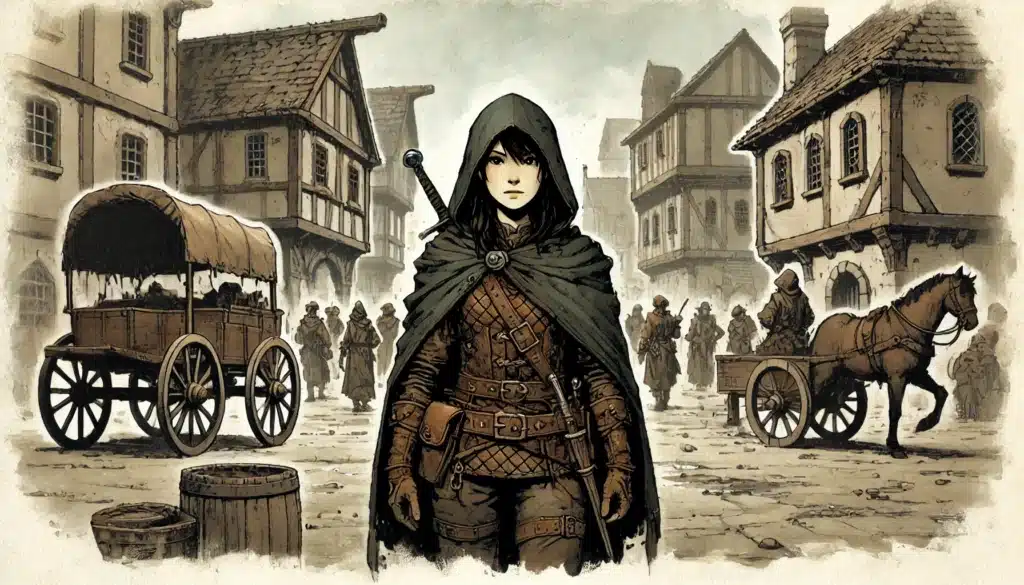
Rogue
Stealthy, cunning, and quick, Rogues specialize in surgical strikes and clever solutions. Their signature move, Sneak Attack, lets them deal massive damage when the odds are right—usually by striking from the shadows or flanking with an ally.
Cunning Action empowers Rogues with unrivaled mobility. Their suite of defensive tricks—Evasion, Uncanny Dodge—makes them hard to pin down, and outside combat they are unparalleled as infiltrators, burglars, and social chameleons.
⚔️ Fantasy RPG Random Tables Books
Make life as a Gamemaster easier…
If you play Dungeons & Dragons, Pathfinder, or other fantasy RPGs, this
RPG random tables series
is packed with encounters, NPCs, treasure, and more. Available in eBook or print—either way, you’ll have a wealth of adventure ideas at your fingertips.
Subclasses, known as Roguish Archetypes, deliver an array of unique skills, powers, and ways to turn the tables.
Roguish Archetypes:
- Thief
- Assassin
- Arcane Trickster
- Inquisitive
- Mastermind
- Scout
- Swashbuckler
- Phantom
- Soulknife
Arcane Tricksters add magic. Swashbucklers blend style with swordplay. Inquisitive and Mastermind excel at investigation and manipulation, while Phantom and Soulknife go full supernatural.
Rogues are for players who want to solve problems creatively and hit hard when the moment’s right. With subclasses tailored to every flavor of trickster, every Rogue becomes a legend in their own right.

Sorcerer
Sorcerers are innate spellcasters—magic runs through their veins, granted by bloodline or supernatural event. Their spell selection is limited, but their core power, Metamagic, allows for unheard-of flexibility: doubling effects, changing range, or casting stealthily.
The Sorcerer’s Font of Magic lets them convert spell slots and sorcery points into extra power, rewarding careful planning and on-the-fly adaptation. Origins, chosen at level 1, define one’s inherent gift.
Sorcerous Origins:
- Draconic Bloodline
- Wild Magic
- Divine Soul
- Shadow Magic
- Storm Sorcery
- Aberrant Mind
- Clockwork Soul
Wild Magic is chaos incarnate; Draconic Bloodline brings elemental durability and force. Divine Soul bridges arcane and divine, Shadow Magic warps darkness, and Aberrant/Clockwork introduce new psionics and order.
Sorcerers are ideal for players who want flexible, high-impact spellcasting with a ton of personality. Their subclasses reward mastery and a deep understanding of timing and synergy.
Warlock
Warlocks are spellcasters whose magic is borrowed—wrested in bargains from patrons cosmic, sinister, or strange. Their spell slots reset on short rests, and their core cantrip—Eldritch Blast—can be modified for devastating effect.
Invocations are the real secret weapon, letting Warlocks break the normal rules of spellcasting, scouting, or survivability. The patron you serve—the subclass—defines your spell list, flavor, and party role.
Warlock Patrons:
- Fiend
- Archfey
- Great Old One
- Hexblade
- Celestial
- Undead
- Genie
- Fathomless
Choose a Fiend for dark power, a Celestial for healing, a Hexblade for weapon mastery, or Fathomless for oceanic mysteries. Each adds layers of lore and playstyle.
Warlocks are for players who love intrigue, dark bargains, and creative spell mechanics. Their toolkit thrives on short rests and flavor-packed choices.
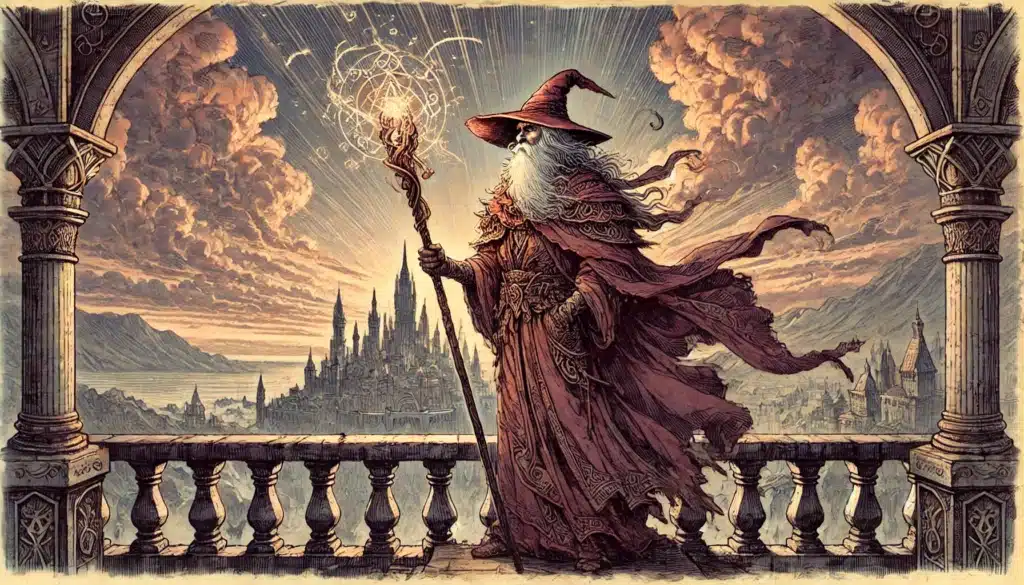
Wizard
Wizards are the quintessential spell scholars: intelligent, adaptable, and unfathomably versatile. They boast the largest spell list in the game, recording their knowledge in spellbooks that are both treasure and lifeline.
Their rituals, cast without expending spell slots, mean that Wizards can always contribute outside of combat—and their subclass, the chosen School at level 2, supercharges a specific style of magic.
Wizard Traditions:
- Abjuration
- Conjuration
- Divination
- Enchantment
- Evocation
- Illusion
- Necromancy
- Transmutation
- Bladesinging
- War Magic
- Graviturgy
- Chronurgy
Wizards are for players who love preparation, mechanics, and narrative mastery. Choose this class if you want to shape any situation, given enough time and forethought. Schools turn you into a force of nature—or bending, or time.
Artificer
Artificers are the magical inventors of D&D: spellcasting engineers who enhance items, craft infusions, and prepare the party for nearly any challenge. As half-casters, they wield spells and tools in equal measure. Infuse Item allows the party’s mundane gear to carry magical punch, while unique features let them tinker, invent, and adapt on the fly.
Artificer subclasses, called Specializations, drive you toward a technology fantasy of your choosing.
Artificer Specializations:
- Alchemist
- Artillerist
- Battle Smith
- Armorer
From potion-masters to mobile artillery units, support-focused medics to armored juggernauts, Artificers feed campaigns heavy on creative problem-solving, crafting, and arcane science.
Artificers fit players who love strategy, resource management, and the thrill of invention. In a world where magic and technology blur, they are the bridge between old legends and new possibilities.
Homebrew Class Options
Some character archetypes simply can’t be captured by official classes—or players crave something fresher still. That’s where homebrew classes come in: original creations, crafted by DMs or designers, tailored to campaign needs or fantasy niches. Homebrew classes fill gaps in the archetypal landscape: the blood magician, the psionic brawler, the inventor without spell slots.
But with creativity comes risk. Homebrew classes lack official balance, and introducing them can create problems for pacing, spotlight, or encounter design. They should always be reviewed with both excitement and caution—and forged in conversation with your DM.
The best homebrew delivers clear themes, clean mechanics, and a unique perspective. It should slot into the game seamlessly, enriching not just your experience but the story for everyone. The worst makes the game about you—and only you—or unintentionally sidelines the rest of the group.
Notable Homebrew Classes:
- Blood Hunter
- Pugilist
- Witch
- Warden
- Shaman
- Necromancer (standalone)
- Gunmage
- Spellblade
- Oracle
- Alchemist (non-Artificer)
- Inventor
- Binder
Be deliberate when pitching homebrew. Have a clear vision for what niche you’re filling, but be receptive to DM feedback and mechanical tweaks. Spell out strengths and weaknesses—avoid granting endless power with no trade-off.
When everyone at the table understands what a homebrew class is meant to do, it can become the beating heart of a campaign. Done right, homebrews let D&D evolve alongside its wildest players and storytellers.
Multiclassing Tips and Strategies
Multiclassing lets you blend class features, synergize mechanics, and chase legendary combos—at a cost. Each jump requires meeting specific ability score requirements, and progress toward your capstone features (like 9th-level spells or highest-level abilities) is delayed or sometimes lost. Spell progression, attacks, and subclass features might all slow down.
That said, the right multiclass build unlocks strategies impossible for pure classes—think of the Fighter/Warlock with endless attacks and magic, or the Bard/Paladin radiating auras while cutting down foes. Often, you exchange higher-level tricks for earlier spikes in power or delicious utility. Overlapping proficiencies can smooth your build, while careful planning creates reliable and dramatic results.
Mistakes happen if you multiclass without clear direction: spreading stats too thin, giving up your class-defining features, or losing sight of your narrative. Good multiclassing starts with a concept, then gets ruthless with the numbers—what are you gaining, and what are you sacrificing?
⚔️ Fantasy RPG Random Tables Books
Make life as a Gamemaster easier…
If you play Dungeons & Dragons, Pathfinder, or other fantasy RPGs, this
RPG random tables series
is packed with encounters, NPCs, treasure, and more. Available in eBook or print—either way, you’ll have a wealth of adventure ideas at your fingertips.
Here are examples of classic multiclass builds—along with their core strengths and weaknesses:
| Multiclass Build | Strengths | Weaknesses |
|---|---|---|
| Sorlock (Sorcerer+Warlock) | Flexible spell slots, powerful cantrip combos, metamagic | Multi-ability dependency, limited spell variety |
| Hexadin (Hexblade+Paladin) | Burst damage, high AC, healing and curses | Delayed spell progression, stat demands |
| Palabard (Paladin+Bard) | Support magic, healing, social power | Later access to top abilities, MAD |
| Fighterlock (Fighter+Warlock) | Extra attacks, Eldritch Blast, action surge | Fewer high-level features, limited spell scaling |
| Rogue + Ranger | Stealth synergy, skill beast, mobility | Fewer big features, spread attributes |
| Fighter + Rogue | Burst damage, movement, defense | Misses highest-level attacks, delay on features |
| Sorcadin (Sorcerer+Paladin) | Quickened smites, magical burst | Stat hungry, delayed access to spells |
| Bardlock (Bard+Warlock) | Charisma-based magic, versatile casting | Slower progression, scattered features |
| Barbarian + Rogue | Sneak Attack + Rage, mobility, defense | Less top-peak damage, stat juggling |
| Cleric + Wizard | Massive spell repertoire, rituals | Slow spell access, diluted identity |
Multiclassing can elevate your play—but only if you do the groundwork. Talk to your DM, map out your goals, and always remember why your character’s story should embrace more than one destiny.
Approach multiclassing with both caution and excitement. It rewards creative minds and meticulous planners, but punishes those who chase every shiny mechanic without a vision. With forethought, you’ll build legends.
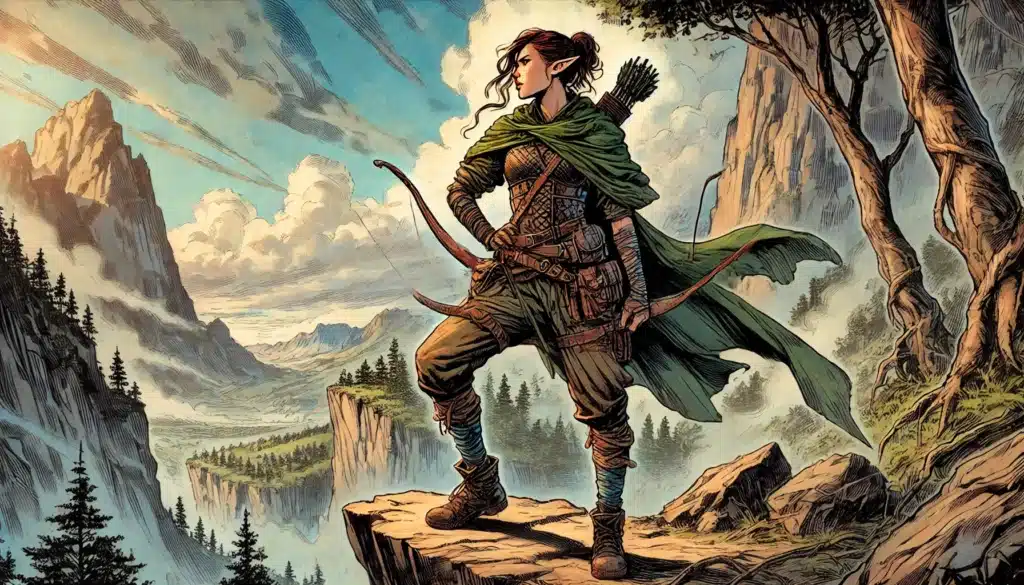
Final Thoughts on DnD Classes and Subclasses
D&D’s class system is a celebration of diversity—mechanical, narrative, and emotional. Each class provides a distinct lens for exploring the world and engaging in adventure. Do you save lives or seek vengeance? Shape reality or bend it to your will? The choice isn’t just about numbers; it’s the engine of your character’s personal myth.
The subclass system unlocks a new layer of specificity and flavor. No two Fighters, or Clerics, or Rogues, need ever resemble each other again—each subclass infuses mechanical distinction and unique narrative potential. Choosing the right subclass doesn’t just optimize your build; it defines where your character comes from and who they wish to become.
The 2024 updates propel the game forward. With balanced, standardized subclass progression, everyone at the table benefits from a clear sense of advancement. You always know when the next big feature is coming, making long-term character arcs more satisfying and structurally sound.
Think beyond optimization. The best characters are built not just for power, but to serve a story—your story. Consider theme, motivation, and what excites you as a player. Subclasses are your opportunity to add color, complexity, and personal stakes.
D&D thrives when players bring both mechanical savvy and narrative passion to the table. Whether your hero is a reincarnated storm god, a haunted daredevil, or a cunning master of illusions, there is a class, subclass, and build tailor-made for your imagination.
Let the rules be your scaffolding, not your straightjacket. Explore, experiment, and above all—tell the story only you can tell. There is a place for every fantasy, every archetype, and every wild idea in the grand mosaic of Dungeons & Dragons.

